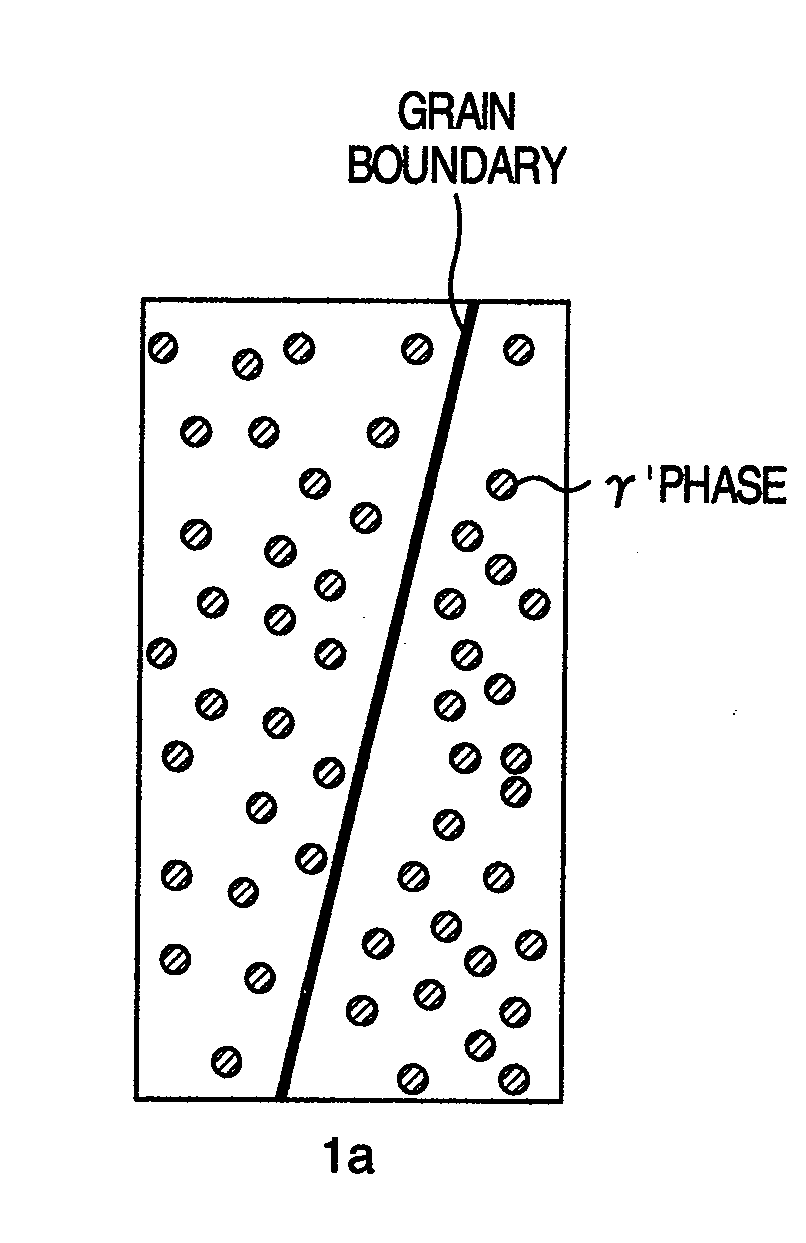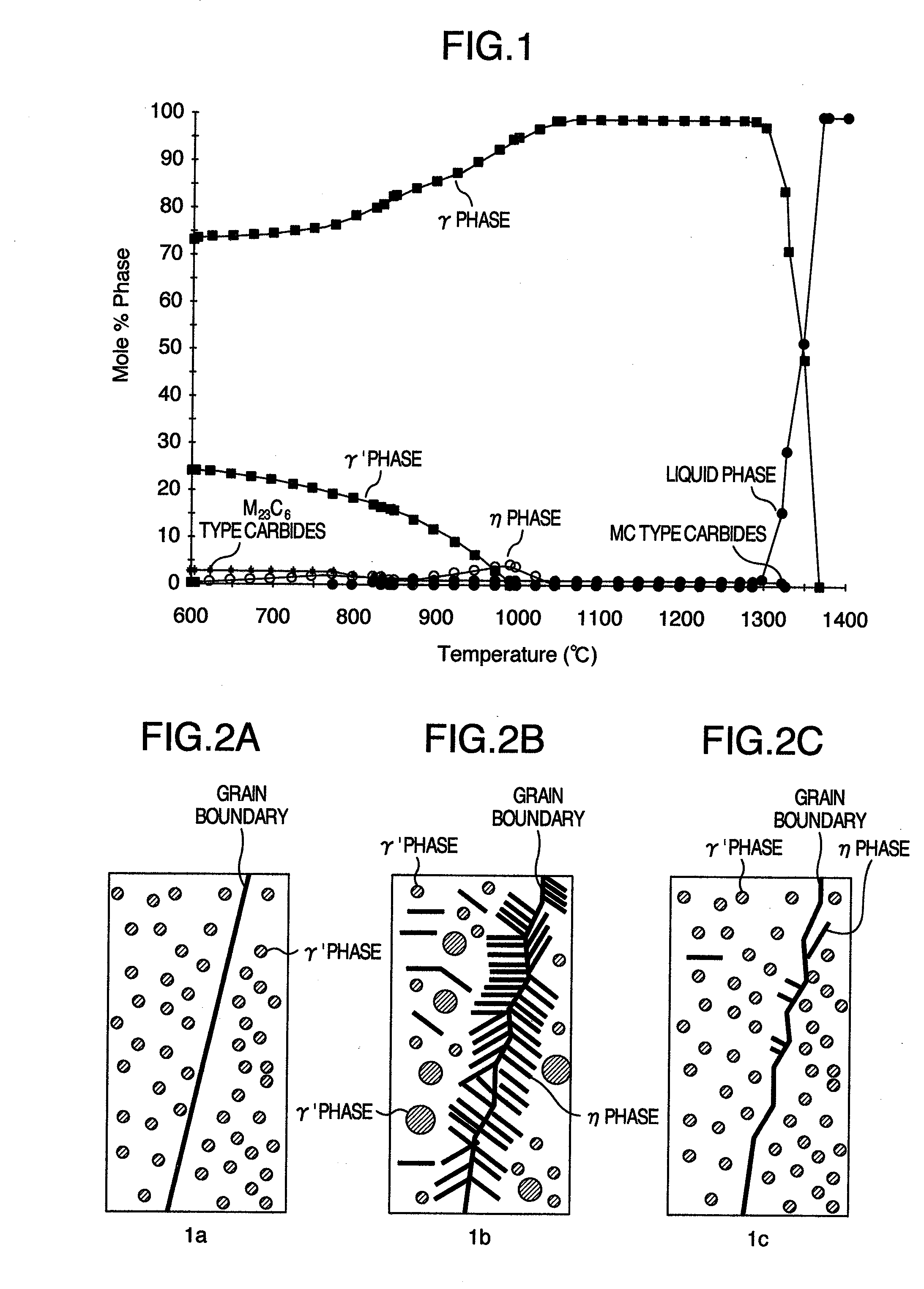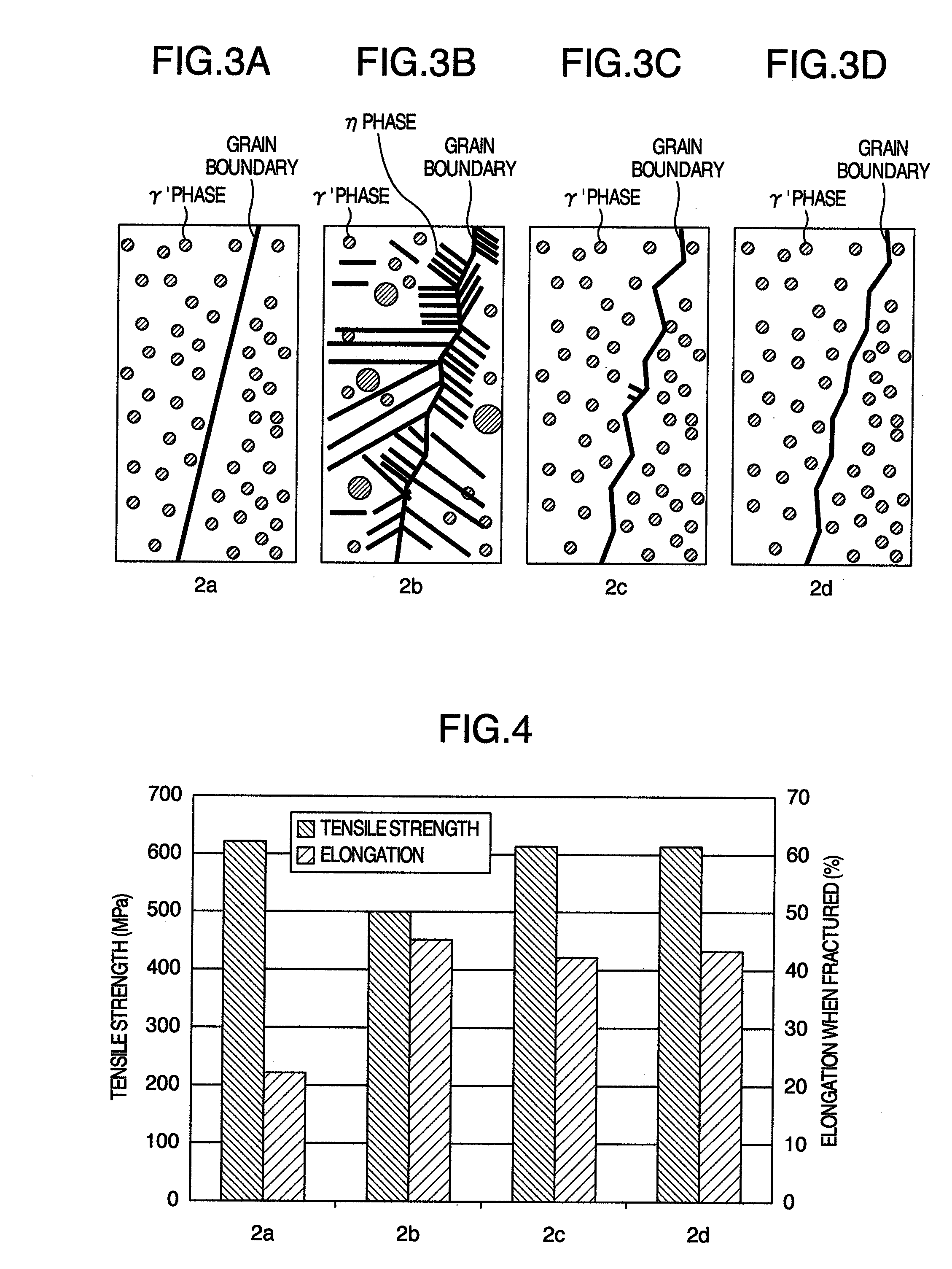Ni-base alloy and method of producing the same
a technology of ni-base alloy and base alloy, which is applied in the field of high-temperature components of gas turbines and steam turbines, can solve the problems of deterioration of intra-grain strength, decrease of ′ and ′′ phases, and decrease of ′ and ′′ phases, and achieve excellent high-temperature strength, long life duration, and recovery of high-temperature strength
- Summary
- Abstract
- Description
- Claims
- Application Information
AI Technical Summary
Benefits of technology
Problems solved by technology
Method used
Image
Examples
example 1
[0046]Table 1 shows the chemical components of a tested material (Specimen A). Table 1 does not show residual components of Ni and incidental impurities.
TABLE 1FeCrTiNbAlSiC36.116.31.72.90.40.020.03
[0047]FIG. 1 is a graph showing the results of phase equilibrium calculation, and indicates that with the chemical composition, the η phase precipitates at a temperature of 800° C. to 900° C. A forged material of the chemical components shown in Table 1 was produced by vacuum melting (50 kg) and hot forging, and divided into a plurality of parts. The thus obtained alloy specimens were subjected to different heat treatments from one another. Table 2 shows heat treatment conditions (1a to 1c) for three Specimens A.
TABLE 2FirstSecondHeatsolutionIntermediatesolutionFirstSecondtreatmentheatagingheatagingagingconditiontreatmenttreatmenttreatmenttreatmenttreatmentComparative982° C., 2 hnonenone720° C., 8 h620° C., 8 hcondition1aComparative982° C., 2 h840° C., 24 hnone720° C., 8 h620° C., 8 hcond...
example 2
[0050]In the present example, a process of recovering a member comprising an Ni-base alloy applied to actual equipment will be described. Table 3 shows the chemical components of Specimen B. Besides the components shown in Table 3, Specimen B contains Ni and may contain impurities.
TABLE 3MoCrTiCoAlSiC6202.4200.40.020.05
[0051]Specimen B was melted by double melting processes of vacuum melting and electro slag re-melting. The melted Specimen B was then formed into a plate having a thickness of about 5 mm by hot forging. The resultant plate material was used to produce a tubular combustor tail pipe. Before use in an actual equipment, the combustor tail pipe was subjected to heat treatments of a solution heat treatment at 1,050° C. for two hours and an aging treatment at 800° C. for 24 hours. The combustor tail pipe was used in a 1,300° C. grade gas turbine with an output power of about 25 MW for about one year. Thereafter, the combustor tail pipe was removed from the actual equipment a...
PUM
| Property | Measurement | Unit |
|---|---|---|
| particle size | aaaaa | aaaaa |
| temperature | aaaaa | aaaaa |
| solid solution temperature | aaaaa | aaaaa |
Abstract
Description
Claims
Application Information
 Login to View More
Login to View More - R&D
- Intellectual Property
- Life Sciences
- Materials
- Tech Scout
- Unparalleled Data Quality
- Higher Quality Content
- 60% Fewer Hallucinations
Browse by: Latest US Patents, China's latest patents, Technical Efficacy Thesaurus, Application Domain, Technology Topic, Popular Technical Reports.
© 2025 PatSnap. All rights reserved.Legal|Privacy policy|Modern Slavery Act Transparency Statement|Sitemap|About US| Contact US: help@patsnap.com



